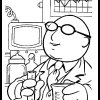A definition of ‘Food safety risk’ can be a multiplication of the likelihood and severity of a hazard being present in the food.
A risk evaluation matrix is a common tool used in risk analysis because it helps visualize risks by prioritizing the likelihood and severity of the hazard.
A matrix plots the ranges, and the likelihood and severity on each of the axis lines. An effective risk matrix should be simple and easy to understand with the consistent ranges of likelihood and severity which should cover all potential outcomes including detailed descriptions of their consequences.
In essence, an effective risk matrix should:
- Be simple to interpret and use
- Have clear directions on how it should be used
- Contain consistent likelihood and severity ranges. These should cover all potential scenarios
- Contain detailed descriptions of the consequences for every scenario and clearly defined risks levels (what’s tolerable and intolerable)
I would recommend you to see the attached PDF document ‘Developing a HACCP plan’ where the steps for creating a comprehensive HACCP plan have been described in detail. Under section 6.6. Hazard Assessment, you will find a good example of a Risk Assessment Model.
 Developing-a-HACCP-Plan.pdf 3.94MB
641 downloads
Developing-a-HACCP-Plan.pdf 3.94MB
641 downloads
Also, a manufacturer should risk assess even the non-HACCP items, i.e. cleaning programs, audit, calibration program etc.
Here is a free workbook for Risk Assessing Non-HACCP items which you may find useful: https://safefood360.com/free-resources/tools/
I hope that helps you but let me know if you have any questions. 
Edited by Simon, 18 April 2019 - 10:57 AM.














